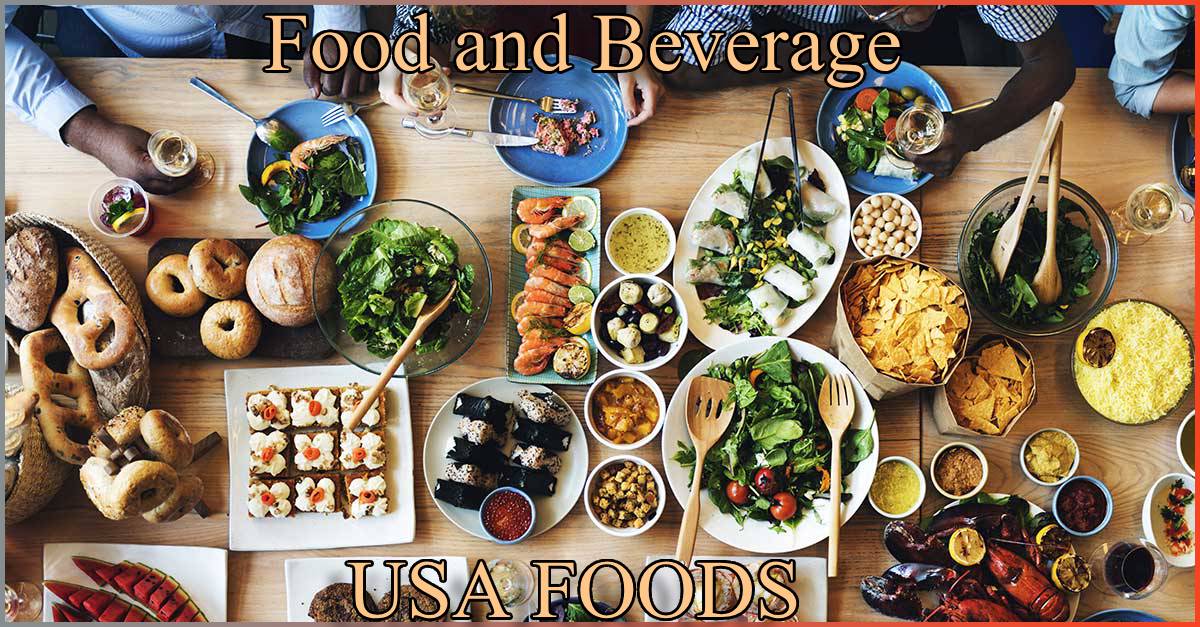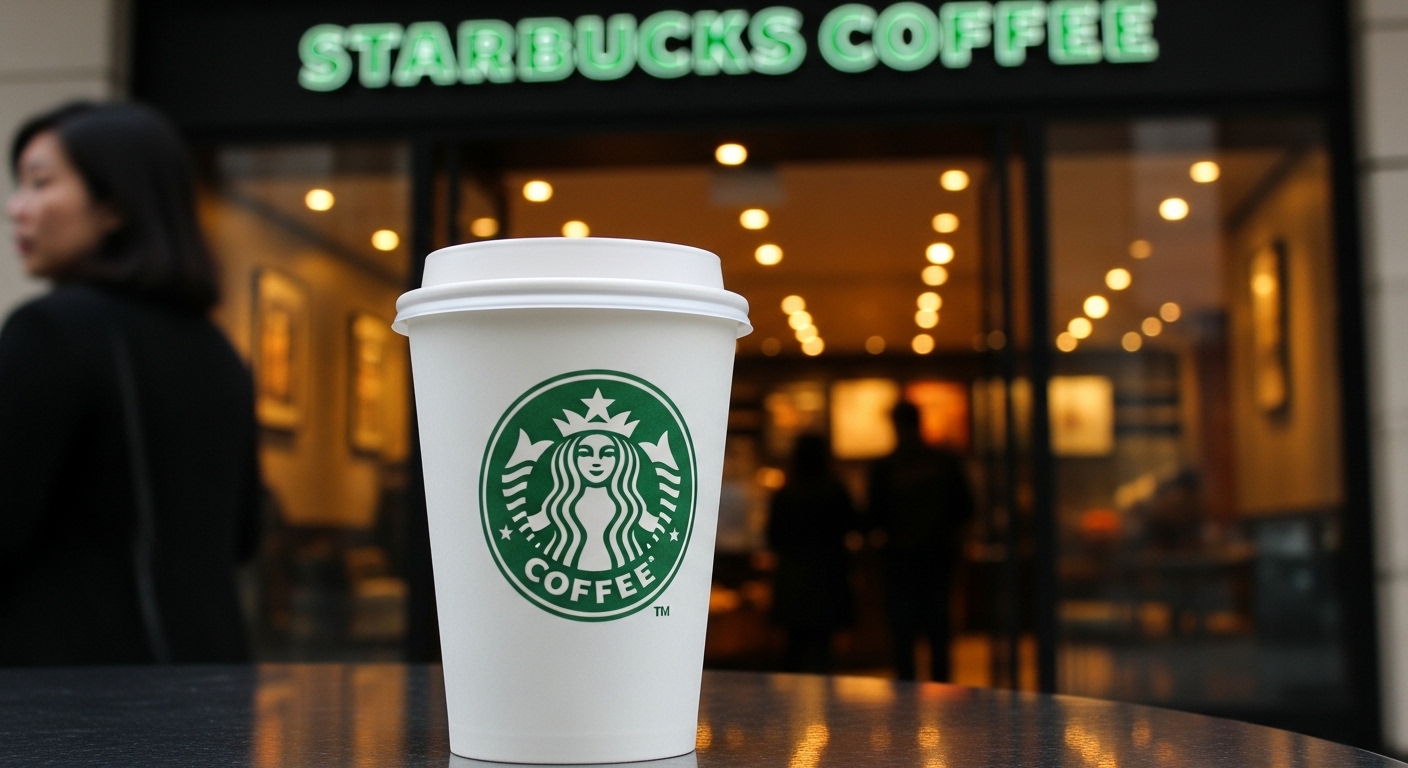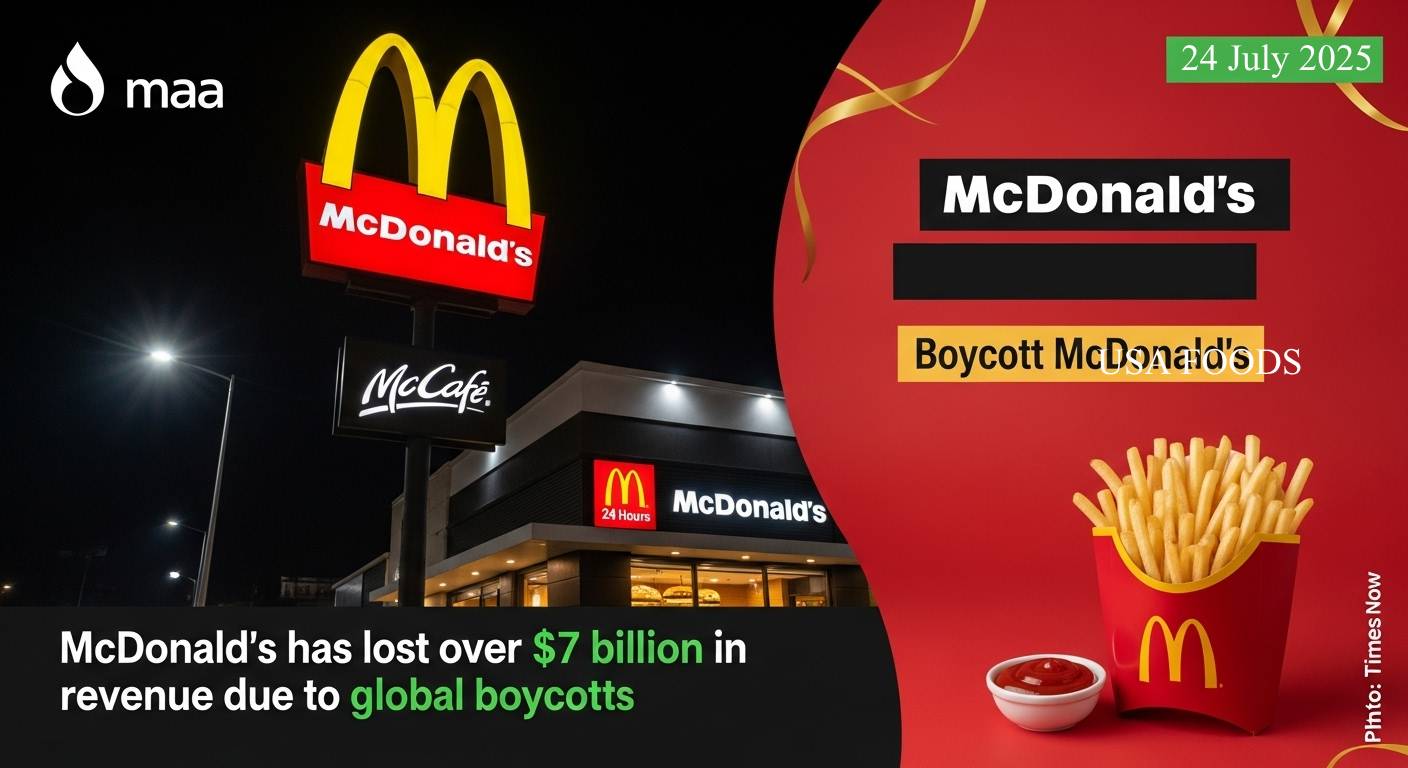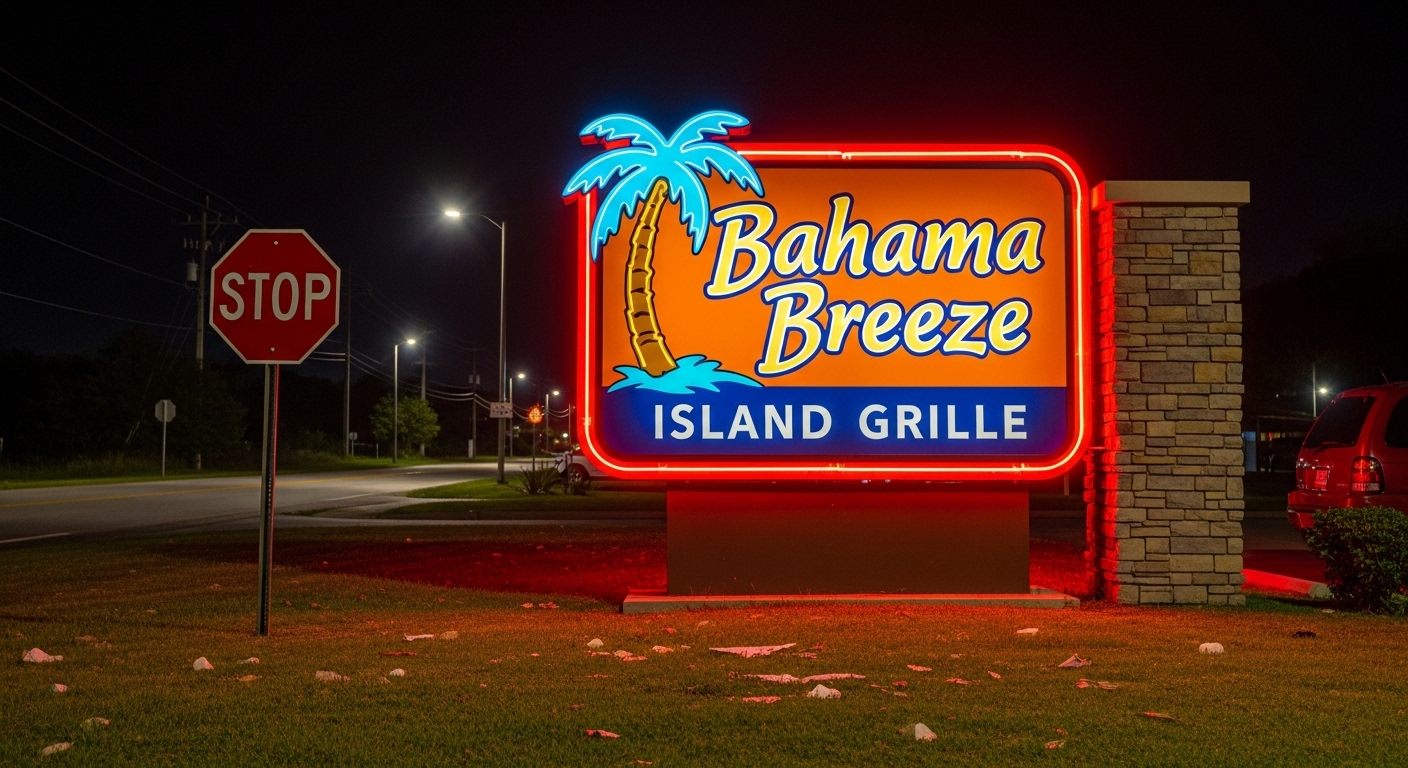“Explore the vast food and beverage industry: from cultivation & processing to global distribution, retail, and hospitality. Understand its trends, challenges & future.”
The world of food and beverage is an expansive and dynamic sector, touching every individual’s life daily. It encompasses everything from the cultivation of raw ingredients to their processing, distribution, and ultimate consumption. This vast industry is a cornerstone of global economies, influencing health, culture, and technological advancement. Understanding the intricate workings and diverse facets of the food and beverage landscape provides insight into how our sustenance reaches our tables and contributes to the broader human experience.
This comprehensive overview will delve into the various components of this essential industry, exploring its journey from farm to fork, its key players, evolving trends, and the challenges it continuously navigates. From local markets to international supply chains, the realm of food and beverage is a testament to human ingenuity and our fundamental need for nourishment and refreshment.
Table of Contents
I. The Production Pillar: From Agriculture to Processing
The journey of all products in the food and beverage sector begins at the source, primarily with agriculture and aquaculture. This foundational stage involves the meticulous cultivation of crops on land, the raising of various types of livestock, and the sustainable harvesting of aquatic life from oceans, rivers, and specialized farms. Farmers and fishers globally are the initial providers, working tirelessly with diverse climates, soil types, and water bodies to produce a wide array of raw materials. These range from staple grains like wheat and rice, and various vegetables and fruits, to dairy products, meats, and seafood. A growing emphasis is placed on sustainable farming practices at this initial phase, directly addressing critical concerns about soil health, water usage, and the crucial preservation of biodiversity, all of which directly influence the future availability of ingredients for the food and beverage industry.
Once these raw materials are successfully harvested, they often proceed to sophisticated manufacturing and processing facilities. This critical stage transforms the raw ingredients into consumable food and beverage products, adding significant value, extending shelf life, and creating unparalleled convenience for the end consumer. Processing operations can vary immensely in their complexity. They may range from simple cleaning, sorting, and basic packaging of fresh produce to highly intricate industrial operations like milling grains into flour, pasteurizing milk, fermenting grapes into wine, or preparing elaborate ready-to-eat meals and specialized drinks. This particular segment within the food and beverage chain utilizes advanced machinery and operates under stringent adherence to international and national food safety standards. Rigorous quality control measures are paramount at every step to ensure that every finished item not only meets health regulations but also consistently satisfies discerning consumer expectations for taste, texture, and appearance. Continuous innovation in processing technology continues to allow for improved preservation methods, enhanced nutrient retention, and the creative development of novel food and beverage textures and forms.
The efficiency and robustness of the supply chain and logistics network are absolutely critical in ensuring that food and beverage items move seamlessly and reliably from diverse production sites to countless consumption points worldwide. This intricate process involves meticulous planning for transportation, encompassing modes like road, rail, sea, and air freight, as well as strategic warehousing and storage solutions. Specialized cold chain logistics are indispensable for highly perishable goods, ensuring that fresh produce, dairy, meats, and frozen food and beverage products maintain their optimal freshness, quality, and safety throughout their journey. Effective inventory management systems are employed to minimize waste and optimize stock levels. Global trade plays an enormous role in this context, with a vast array of ingredients and finished food and beverage products routinely traversing continents. Any significant disruptions in this complex chain, whether triggered by natural disasters, unforeseen geopolitical events, or sudden economic shifts, can have widespread and immediate impacts on the availability and pricing of essential food and beverage items, starkly highlighting the delicate and interconnected balance inherent in delivering sustenance across the globe.
II. Reaching the Consumer: Distribution and Retail Channels
Once processed and prepared, items from the food and beverage sector must effectively reach the hands of the end consumer. This is accomplished through a vast and diverse network of distribution and retail channels, each serving distinct purposes and consumer needs.
Traditional retail channels continue to hold a dominant position in the food and beverage market. Supermarkets and hypermarkets are primary examples, offering an immense and varied selection of groceries, fresh produce, meat, dairy, and often a range of prepared meals and a wide array of choices for food and beverage under one roof. Their extensive geographic reach and unparalleled ability to stock diverse products make them the go-to access point for daily sustenance for millions. Convenience stores, conversely, cater to immediate and on-the-go needs with smaller, more curated assortments, typically focusing on impulse buys like snacks, bottled drinks, and essential quick food and beverage items. Specialty stores, such as local bakeries, dedicated butcher shops, artisanal delis, and organic food stores, cater to specific niche markets, providing high-quality, handcrafted, or unique offerings from the food and beverage world that often emphasize local sourcing or specialized preparation. Wholesale clubs also serve a segment of the market, offering bulk quantities of food and beverage at competitive prices, popular with larger families or small businesses.
The profound rise of e-commerce has significantly transformed the landscape of food and beverage retail in recent years. Online grocery delivery services have witnessed a monumental surge in popularity, offering consumers the unparalleled convenience of shopping for all their food and beverage needs from the comfort of their homes and having items delivered directly to their doorstep. This particular trend experienced accelerated growth during recent global events, prompting even traditional brick-and-mortar retailers to make substantial investments in developing and enhancing their digital platforms and delivery logistics infrastructure. Meal kit delivery services also represent another rapidly expanding segment within this evolving market. These services provide pre-portioned ingredients along with detailed recipes for home cooking, effectively blending the convenience of pre-preparation with the culinary experience of preparing a fresh meal. These ongoing digital innovations are profoundly reshaping consumer shopping habits and are continuously pushing traditional retail models to adapt and evolve to meet new expectations for accessibility to food and beverage products.
Beyond conventional retail, farmers’ markets and various direct-to-consumer sales channels continue to play an incredibly vital role, particularly for consumers seeking fresh, locally sourced, and often organic food and beverage items. These channels emphasize transparency in sourcing, promote sustainable practices, and provide crucial support for local economies. They foster a unique direct connection between consumers and producers, building a sense of community and trust that is often harder to achieve within larger, more impersonal retail chains. The increasing diversity in retail options, from vast supermarkets to personalized online deliveries and local markets, truly underscores the varied and evolving consumer preferences for how they choose to acquire their food and beverage needs.
III. The Service Experience: Hospitality and Food Service
A substantial and incredibly vibrant portion of the food and beverage industry resides within the food service or hospitality sector, where culinary creations and drinks are expertly prepared and served for immediate consumption in a vast array of settings. This sector is characterized by its remarkable diversity, offering an extensive spectrum of dining experiences and a staggering variety of cuisines.
Restaurants are perhaps the most universally recognizable component of this sector, encompassing an enormous range of establishments. This includes high-end fine dining venues that curate exquisite gourmet experiences, casual dining eateries offering comfortable and familiar fare, efficient fast-casual concepts, and ubiquitous quick-service (fast-food) chains. Additionally, ethnic restaurants specializing in authentic global cuisines, from Italian trattorias to bustling Vietnamese pho shops, form a significant and cherished part of the culinary landscape. The ultimate success of any restaurant often depends not merely on the quality of its food and beverage, but equally on ambiance, service, and concept. The variety ensures that every culinary preference can be met, contributing significantly to cultural life in urban centers and beyond.
Cafes and bars represent another crucial and dynamic segment within the food service industry. Cafes typically serve as inviting social spaces for relaxation, casual meetings, or focused work, all while providing a range of coffee creations, teas, pastries, and other light items from the food and beverage category. The global cafe culture, in particular, has experienced a massive boom, transforming these establishments into essential community hubs. Bars, which can range from traditional local pubs with a cozy atmosphere to sophisticated, trendy cocktail lounges, offer a diverse selection of alcoholic and non-alcoholic drinks, often accompanied by a curated menu of light snacks or appetizers. These venues are fundamental for social interaction, networking, and entertainment, and their specific food and beverage offerings frequently reflect the unique cultural nuances and preferences of their local clientele.
Catering services specialize in providing expertly prepared food and beverage for a wide array of events. Their scope can range from intimate private parties and family celebrations to large-scale corporate gatherings, elegant weddings, and major conferences. Catering companies excel at offering customized menus and flexible service styles, meticulously adapting their offerings to meet specific client needs, dietary requirements, and logistical demands of any given venue. This segment of the food and beverage sector demands exceptionally meticulous planning, precise logistical execution, and a consistently high standard of quality, ensuring that food and beverage delivery for special occasions is flawlessly executed and leaves a lasting positive impression.
Beyond dedicated dining establishments, hotels and other accommodation providers integrate comprehensive food and beverage services as a core and essential part of their guest offering. This typically includes full-service hotel restaurants, convenient in-room dining (room service), extensive banquet and conference facilities, and inviting hotel bars. These integrated services provide convenient and often luxurious dining options for guests. The perceived quality and variety of the food and beverage in hotels can significantly influence overall guest satisfaction, repeat business, and the establishment’s general reputation. Similarly, cruise lines, airlines, and various other travel entities operate extensive and often complex food and beverage operations. These unique environments present considerable logistical challenges in preparing, storing, and serving meals and drinks to a large number of passengers in confined or moving spaces, requiring specialized expertise in food and beverage management.

IV. Evolving Landscape: Key Trends and Innovations
The food and beverage industry is in a state of perpetual evolution, profoundly shaped by rapidly changing consumer preferences, groundbreaking technological advancements, and a growing global consciousness regarding health and sustainability. Several pivotal trends are currently driving widespread innovation and transformation across every segment of this essential sector.
Sustainability and Ethical Consumption represent a paramount driving force. There is an accelerating demand for food and beverage options that are not only delicious but also environmentally responsible and ethically produced. This manifests in a significant surge in plant-based diets, with a vast array of vegan and vegetarian alternatives for traditional meat, dairy, and egg products gaining mainstream acceptance. Ethical sourcing, encompassing fair trade practices and responsible labor conditions throughout the supply chain, is also a high priority for both discerning consumers and forward-thinking businesses. Concerted efforts to minimize packaging waste, particularly the reduction and elimination of single-use plastics, are spurring innovative solutions in the design of bottles, containers, and wrapping materials for various food and beverage items. Furthermore, enhanced traceability of products, allowing consumers to follow their food and beverage from farm to fork, is becoming increasingly important, empowering individuals to make more informed choices about the environmental and social impact of their purchases.
Health and Wellness Focus continues to be a major trend, with consumers demonstrating unprecedented levels of health consciousness. This drives a robust demand for functional foods, which are food and beverage items offering added health benefits beyond basic nutrition, such as probiotics for gut health or fortified vitamins. Personalized nutrition, where diets are tailored to individual needs based on genetics, lifestyle, or health goals, is an emerging frontier. There is also a strong preference for products with reduced sugar, lower sodium content, and healthier fat profiles. The proliferation of gluten-free, dairy-free, and other allergen-friendly food and beverage options caters to specific dietary requirements and sensitivities, reflecting a broader shift towards inclusive dietary choices. Foods rich in probiotics and prebiotics, as well as those fortified with essential vitamins and minerals, are gaining significant traction as people proactively seek to manage their overall health and well-being through their food and beverage choices.
Technological Advancements are fundamentally revolutionizing every aspect of the food and beverage industry. Artificial intelligence (AI) and advanced data analytics are being deployed to optimize a myriad of processes, from predicting consumer demand and optimizing crop yields through precision agriculture to enhancing supply chain efficiency and personalizing marketing efforts. Automation and robotics are increasingly present in food processing plants, warehousing, and even in food service, streamlining operations and improving consistency. Blockchain technology is being actively explored to enhance traceability and transparency throughout complex supply chains, building greater trust in the origin of food and beverage. Innovative food production methods like vertical farming and cellular agriculture (producing lab-grown meat) represent groundbreaking advancements, promising more sustainable and efficient ways to provide food and beverage for a growing global population. The widespread adoption of food delivery platforms and the emergence of “ghost kitchens” have fundamentally altered how consumers access prepared food and beverage, offering unparalleled convenience and a vast array of choices.
Shifting Consumer Preferences also play a significant role. Convenience remains a top priority, leading to continued growth in ready-to-eat and ready-to-cook food and beverage options. Experiential dining, where the meal is part of a larger, memorable experience, is gaining popularity. This can involve interactive concepts, unique ambiances, or multi-sensory presentations. The increasing interconnectedness of the world also fuels a growing appetite for diverse global flavors and culinary tourism, prompting chefs and food developers to experiment with new ingredients, spices, and techniques from around the globe to enhance their food and beverage offerings. The “clean label” movement, emphasizing minimal ingredients and easily understandable labels, reflects a broader desire for transparency and simplicity in food and beverage products.
The Craft and Artisan Movement signifies a growing appreciation for handcrafted, small-batch, and locally produced food and beverage items. This trend prioritizes high-quality ingredients, often traditional preparation methods, and unique, authentic flavors, frequently bypassing large-scale mass production. From the booming craft brewery scene and artisanal bakeries creating sourdough breads to small-scale coffee roasters meticulously sourcing beans and specialized cheese makers, consumers are actively seeking unique, high-quality products from the food and beverage category with a story. This movement reflects a desire for transparency, superior quality, and a deeper connection to the origins and craftsmanship behind their chosen food and beverage.
V. Industry Challenges and Regulatory Frameworks
The food and beverage industry, despite its essential nature, faces a complex array of challenges, ranging from the fundamental responsibility of ensuring public health to the continuous need to adapt to rapidly changing market dynamics and environmental pressures. A robust and comprehensive regulatory framework is absolutely essential to maintain high standards across the sector and effectively protect consumers within the food and beverage space.
Food Safety and Quality Control remains perhaps the most critical and non-negotiable challenge. Ensuring that all food and beverage products are consistently safe for consumption requires incredibly rigorous adherence to stringent hygiene standards, meticulous quality control protocols at every stage of production, and comprehensive testing throughout the entire supply chain, from farm to retail. Outbreaks of foodborne illness can have devastating consequences for public health, leading to serious illnesses or even fatalities, and simultaneously result in significant financial repercussions, severe reputational damage, and legal liabilities for businesses involved in the food and beverage supply chain. Regular governmental inspections, mandatory certifications, and unwavering compliance with national and international food safety laws are not merely recommended but are absolutely non-negotiable requirements for any entity operating within this sector of food and beverage.
Economic Pressures introduce significant instability into the food and beverage sector. Businesses are constantly exposed to unpredictable commodity price fluctuations for raw ingredients, which can be influenced by weather patterns, global supply/demand, and geopolitical events. Inflationary pressures on operational costs, including energy, transportation, and labor, can directly impact profitability and consumer prices for food and beverage. Labor costs and the availability of skilled and unskilled labor are persistent concerns, particularly in labor-intensive segments like agriculture and food service. Geopolitical tensions, trade disputes, and currency fluctuations further complicate international sourcing and distribution of food and beverage products.
Environmental Impact presents a profound and ongoing obstacle. While sustainability is a growing consumer trend, implementing genuinely sustainable practices across the immense scale of the food and beverage industry presents considerable operational hurdles. Efforts to reduce carbon footprints, manage increasingly scarce water resources, address widespread land degradation resulting from intensive farming practices, and discover genuinely viable and scalable alternatives to traditional, often polluting, packaging all demand substantial long-term investment, continuous research, and persistent innovation. The sheer volume of global food and beverage production means that even seemingly small improvements in sustainability can cumulatively have a massive, positive global impact. Furthermore, the pervasive issue of food waste, occurring at every stage from agricultural production to processing, distribution, retail, and consumer households, remains a monumental problem, prompting widespread efforts in food redistribution programs, composting initiatives, and the development of technological solutions to minimize spoilage within food and beverage operations.
Adapting to Consumer Demands is a persistent challenge due to their rapid evolution. Modern consumers are more informed and consequently more demanding than ever before. They expect unparalleled transparency regarding ingredients, ethical sourcing practices, and the environmental impact of the food and beverage products they purchase. Dietary trends shift with remarkable speed, requiring companies to be incredibly agile and responsive in their product development and marketing strategies. The pervasive influence of social media means that consumer sentiment and brand reputation within the food and beverage space can be impacted almost instantaneously by public opinion, demanding proactive and effective communication strategies.
Regulatory Complexity forms a dense and intricate web that the food and beverage industry must constantly navigate. There are myriad laws governing every aspect, including detailed labeling requirements, strict advertising standards (especially for health claims), meticulous ingredient approvals, precise production methods, and complex import/export rules. Navigating this constantly evolving and complex regulatory landscape requires specialized legal and scientific expertise, and continuous vigilance to ensure adherence. Any changes in public policy, particularly those concerning health or environmental standards, can necessitate significant operational adjustments for businesses involved in the production and distribution of food and beverage.
VI. Diverse Career Opportunities
Given its immense scale and inherent complexity, the food and beverage sector offers an incredibly diverse and rich array of career opportunities, appealing to a wide spectrum of skills and interests. Beyond the immediately obvious roles of chefs, culinary artists, and agricultural workers, the industry critically requires professionals in numerous specialized fields.
These include dedicated Food Scientists and Technologists who are at the forefront of research and development, ensuring quality assurance, and driving product innovation. Supply Chain and Logistics Managers are essential for optimizing operations, including cold chain specialists and distribution planners, ensuring seamless movement of products. Marketing and Sales Professionals are vital for brand management, conducting intricate market research, deriving crucial consumer insights, and managing expanding e-commerce operations related to food and beverage.
In the Hospitality Management realm, there are roles for restaurant managers, hotel operations specialists, and meticulous event planners. For those passionate about Sustainability and Environmental Roles, opportunities exist as agronomists, environmental compliance officers, and sustainable sourcing managers, addressing the industry’s environmental footprint. Regulatory Affairs Specialists ensure compliance with complex food safety laws and standards for food and beverage products. Lastly, the Culinary Arts domain encompasses a wide range of roles from executive chefs and talented bakers to skilled mixologists and creative food stylists.
The continuous evolution and fundamental necessity of the food and beverage industry ensure that it remains a vibrant, indispensable sector, consistently offering dynamic and rewarding career paths for individuals with a vast array of talents and expertise.
Conclusion: The Indispensable Future of Food and Beverage
The food and beverage industry stands as a remarkable testament to human innovation and our enduring, profound connection to what we consume. It is a perpetually dynamic and intricately evolving ecosystem, driven by fundamental human needs, the rich tapestry of cultural diversity, and rapid, transformative technological advancement. From the fertile fields where crops are sown to the sophisticated laboratories where new food and beverage products are engineered, every step is crucial.
As the global population continues its growth trajectory and consumer preferences become more sophisticated, nuanced, and varied, the food and beverage sector will undoubtedly continue to adapt, innovate, and lead. The escalating imperative for deep-rooted sustainability, robust health-consciousness, and unwavering ethical practices will, without question, profoundly shape its future trajectory and drive its advancements. Understanding the intricate and delicate dance between production, distribution, consumption, and innovation within this absolutely vital industry is key to appreciating its pervasive influence on our lives and its truly indispensable role in shaping a sustainable, nourished, and culturally rich future for all of humanity. The journey of every single food and beverage item reflects a monumental and complex global effort, an ongoing commitment to ensuring that sustenance, comfort, culinary delight, and refreshment remain widely accessible across the entire world.




